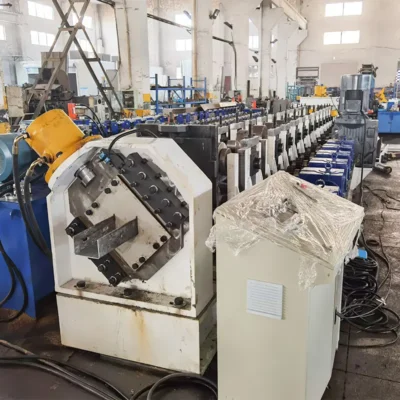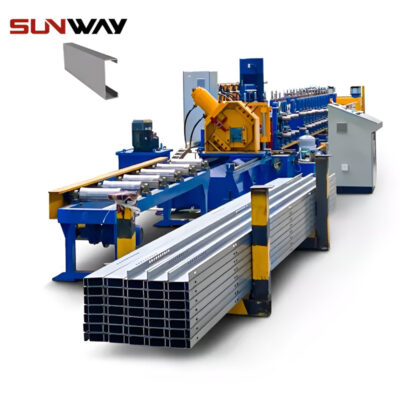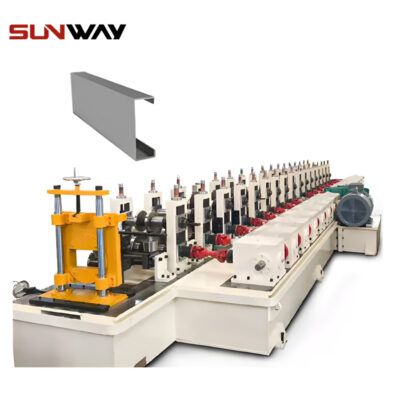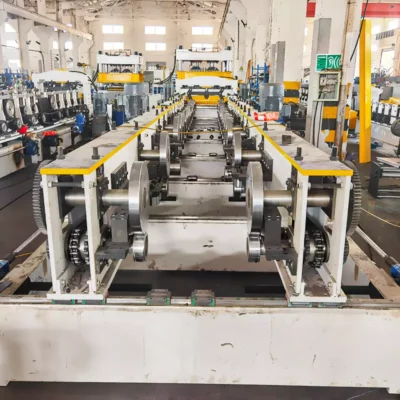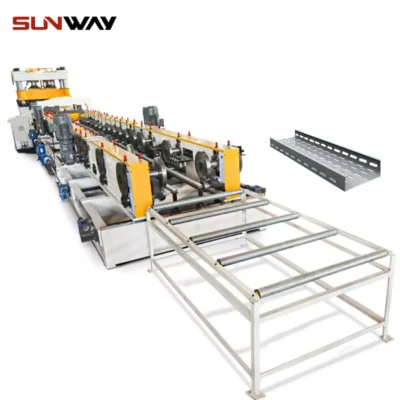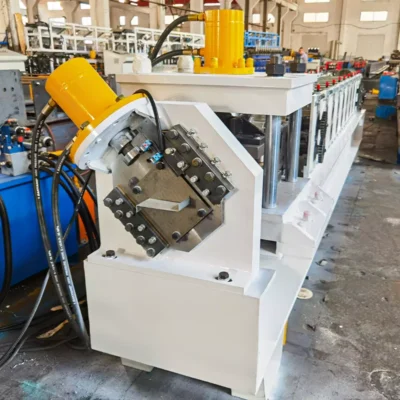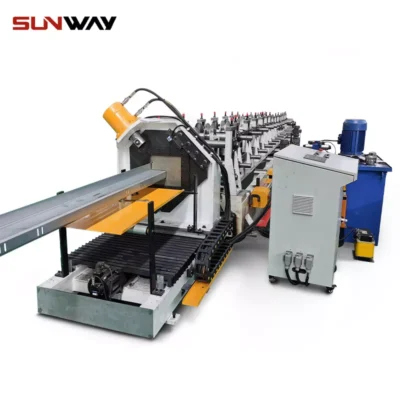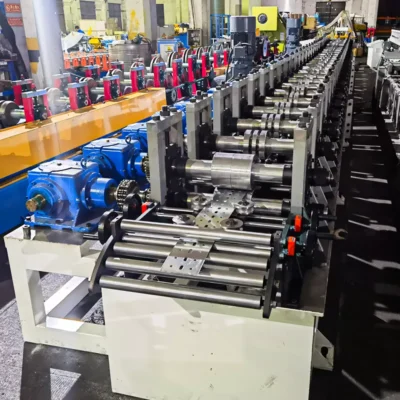In today’s fast-paced manufacturing landscape, automation and robotics are revolutionizing traditional production methods. Robotics Roll Forming Machines are at the forefront of this transformation, offering unparalleled precision, efficiency, and scalability in metal forming processes. These machines integrate robotic automation with advanced roll forming technology, enabling manufacturers to produce high-quality metal profiles with minimal human intervention.
From automotive components and aerospace structures to construction materials and industrial frameworks, robotic roll-forming technology is redefining how metal products are manufactured. In this comprehensive guide, we’ll explore what Robotics Roll Forming Machines are, their applications, pricing, key features, troubleshooting tips, and why Wuxi Sunway Machinery is leading the industry in robotic roll-forming solutions.
What Are Robotics Roll Forming Machines?
ए Robotics Roll Forming Machine is an advanced production system that combines robotic arms, automated feeding systems, and AI-driven control mechanisms to form metal sheets into precise profiles. These machines eliminate the need for manual adjustments and human intervention, significantly improving production speed, consistency, and quality control.
Key Features of Robotics Roll Forming Machines
- Fully Automated Operation – Reduces labor costs and increases efficiency.
- AI-Powered Precision Control – Ensures real-time adjustments for optimal product quality.
- Multi-Axis Robotic Arms – Handle material feeding, bending, and stacking with high precision.
- Predictive Maintenance & IoT Integration – Monitors machine health and prevents downtime.
- High-Speed Production – Processes up to 100 meters per minute with zero defects.
- Adaptive Forming Technology – Adjusts roll-forming parameters on the fly to handle complex profiles.
Applications of Robotics Roll Forming Machines
The integration of robotics into roll-forming technology has expanded its applications across multiple industries. Below are the most significant use cases:
1. Automotive and EV Manufacturing
- Use Case: Producing automotive body panels, crash bars, and chassis reinforcements.
- Why It’s Essential: Ensures high-strength, lightweight components with perfect repeatability.
2. Aerospace and Aviation Components
- Use Case: Manufacturing aircraft fuselage panels, wing reinforcements, and structural beams.
- Why It’s Beneficial: Delivers ultra-lightweight, high-strength materials for aerospace applications.
3. Construction and Infrastructure
- Use Case: Producing roofing sheets, structural beams, and framing systems for large-scale projects.
- Why It’s Important: Improves construction speed, reduces labor costs, and minimizes material waste.
4. Industrial and Heavy Machinery Parts
- Use Case: Fabricating customized metal panels for industrial enclosures and machinery casings.
- Why It’s Necessary: Enhances durability, strength, and precision for heavy-duty applications.
5. Smart Factory Automation and Industry 4.0
- Use Case: Integrating robotic roll forming into fully automated smart factories.
- Why It’s Cutting-Edge: Enables real-time production monitoring, AI-driven quality control, and predictive maintenance.
6. Renewable Energy and Solar Panel Frames
- Use Case: Producing solar panel mounting structures and wind turbine components.
- Why It’s Innovative: Supports sustainable energy development with high-precision, corrosion-resistant materials.
Key Features of Wuxi Sunway Robotics Roll Forming Machines
当谈到 automation, precision, and efficiency, Wuxi Sunway Machinery is a global leader in robotic roll-forming technology. Their Robotics Roll Forming Machines are designed to meet the highest industry standards and are trusted by manufacturers worldwide.
1. Fully Automated Robotic Handling
- What It Offers: Advanced robotic arms for material feeding, forming, and stacking.
- Why It’s Critical: Eliminates manual labor, reduces human error, and improves efficiency.
2. AI-Driven Quality Control
- What It Ensures: AI-powered systems that monitor product quality in real-time.
- Why It’s Beneficial: Detects defects instantly, reducing waste and rework costs.
3. Multi-Layer Adaptive Roll Forming
- What It Delivers: Machines capable of producing multi-layer panels with integrated coatings and reinforcements.
- Why It’s Valuable: Enables customized solutions for aerospace, automotive, and industrial applications.
4. IoT and Smart Factory Integration
- What It Incorporates: Real-time monitoring, remote diagnostics, and predictive maintenance.
- Why It’s Innovative: Enhances operational efficiency and prevents unexpected downtime.
5. High-Speed, High-Precision Operation
- What It Achieves: Processes metal sheets at speeds of up to 100 meters per minute.
- Why It’s Efficient: Ensures mass production capabilities without compromising precision.
6. Customizable Robotics Configurations
- What It Supports: Modular tooling systems for handling diverse metal profiles and thicknesses.
- Why It’s Flexible: Allows manufacturers to adapt to evolving market demands.
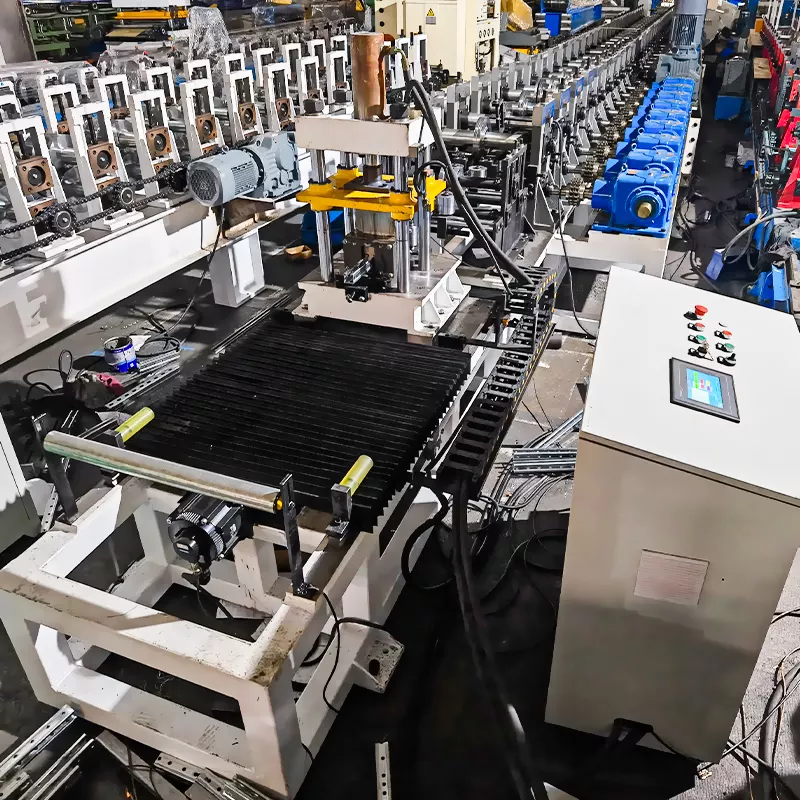
Pricing of Robotics Roll Forming Machines
The cost of a Robotics Roll Forming Machine varies depending on its automation level, production capacity, and customization options. Below is a general pricing guide for 2025:
| Machine Type | Capabilities | Price Range (USD) |
|---|---|---|
| Standard Robotic Machines | Basic automated roll forming | 400,000–400,000–400,000–800,000 |
| Advanced AI-Integrated Machines | High-speed production with real-time defect detection | 800,000–800,000–800,000–1,500,000 |
| Customizable Smart Factory Systems | Fully automated, IoT-connected Industry 4.0 solutions | 1,500,000–1,500,000–1,500,000–3,500,000 |
For personalized pricing and financing options, contact Wuxi Sunway Machinery.
Advantages of Using Robotics Roll Forming Machines
1. Increased Production Efficiency
- Mass-produces high-quality metal profiles with minimal downtime.
2. Zero Human Error and Maximum Precision
- AI-driven accuracy ensures consistent product quality.
3. Reduced Labor Costs
- Eliminates manual handling, reducing workforce expenses.
4. Sustainable and Energy-Efficient Production
- Optimizes material usage, reducing waste and energy consumption.
5. Seamless Smart Factory Integration
- Enables real-time data analysis and automation for maximum productivity.
Real-World Success Stories: How Robotics Roll Forming Machines Are Driving Industry 4.0
From automotive production lines to large-scale infrastructure projects, Robotics Roll Forming Machines have played a crucial role in delivering efficient, high-quality, and customized metal profiles. Below are real-world applications showcasing how these machines are making an impact.
1. Automotive Chassis and Structural Components in Germany
Client: A leading European automotive manufacturer specializing in electric vehicles (EVs).
Challenge: The company needed to increase production speed while ensuring precision in lightweight aluminum chassis components.
Solution: Wuxi Sunway Machinery provided a robotic roll-forming system integrated with AI-driven defect detection.
Outcome:
- Increased production speed by 40%, meeting growing EV demand.
- Reduced material waste by 25%, cutting production costs significantly.
- Ensured flawless consistency, meeting ISO automotive standards.
2. Aerospace Structural Reinforcements in the United States
Client: A major aerospace contractor producing aircraft fuselage panels and wing reinforcements.
Challenge: Required ultra-precise, high-strength aluminum components for next-generation aircraft.
Solution: Wuxi Sunway supplied a multi-axis robotic roll-forming machine with real-time laser measurement systems.
Outcome:
- Achieved 0.01mm precision in aerospace-grade aluminum components.
- Reduced manual rework by 80%, improving operational efficiency.
- Enhanced structural integrity, exceeding aviation industry requirements.
3. Smart Factory Construction Materials in Japan
Client: A construction firm specializing in modular buildings and prefabricated structures.
Challenge: Needed automated, high-speed roll-forming to produce roof panels, wall panels, and steel framing.
Solution: Wuxi Sunway delivered a fully robotic roll forming solution with IoT-enabled production monitoring.
Outcome:
- Doubled production capacity, reducing lead times for modular home construction.
- Improved energy efficiency by 30%, lowering operational costs.
- Enabled seamless integration with existing smart factory systems.
4. Renewable Energy Structural Supports in India
Client: A solar energy company manufacturing solar panel mounting structures.
Challenge: Needed to scale production while ensuring corrosion-resistant, lightweight solar panel frames.
Solution: Wuxi Sunway provided an automated roll-forming system capable of producing galvanized steel profiles with anti-corrosion coatings.
Outcome:
- Increased solar panel frame production by 50%.
- Reduced material waste, making production more sustainable.
- Enabled faster deployment of renewable energy projects across India.
Future Trends in Robotics Roll Forming for 2025
As industries transition towards automation, sustainability, and AI-driven manufacturing, Robotics Roll Forming Machines are evolving to meet new market demands. Below are the key trends shaping the future of robotic roll forming:
1. Fully Autonomous Manufacturing Cells
- Trend: Integration of robotics, AI, and IoT to create self-sustaining manufacturing cells.
- Impact on Machines: Machines will be capable of real-time adjustments, predictive maintenance, and autonomous operation.
2. AI-Enhanced Quality Control
- Trend: Implementation of machine learning algorithms to detect defects in real time.
- Impact on Machines: Reduces waste, rework costs, and human intervention in quality control.
3. Lightweight and High-Strength Material Processing
- Trend: Growing demand for aluminum, titanium, and carbon fiber-reinforced materials.
- Impact on Machines: Machines will adapt to processing ultra-lightweight, high-strength materials for aerospace and EV applications.
4. Green Manufacturing and Energy Efficiency
- Trend: Focus on energy-efficient roll-forming processes aligned with sustainable production goals.
- Impact on Machines: Machines will integrate low-energy motors, smart power optimization, and eco-friendly material processing.
5. Modular and Customizable Robotics Systems
- Trend: Demand for custom-configured robotic roll-forming solutions based on specific industry needs.
- Impact on Machines: Manufacturers will seek flexible, easily reconfigurable systems to handle varied production requirements.
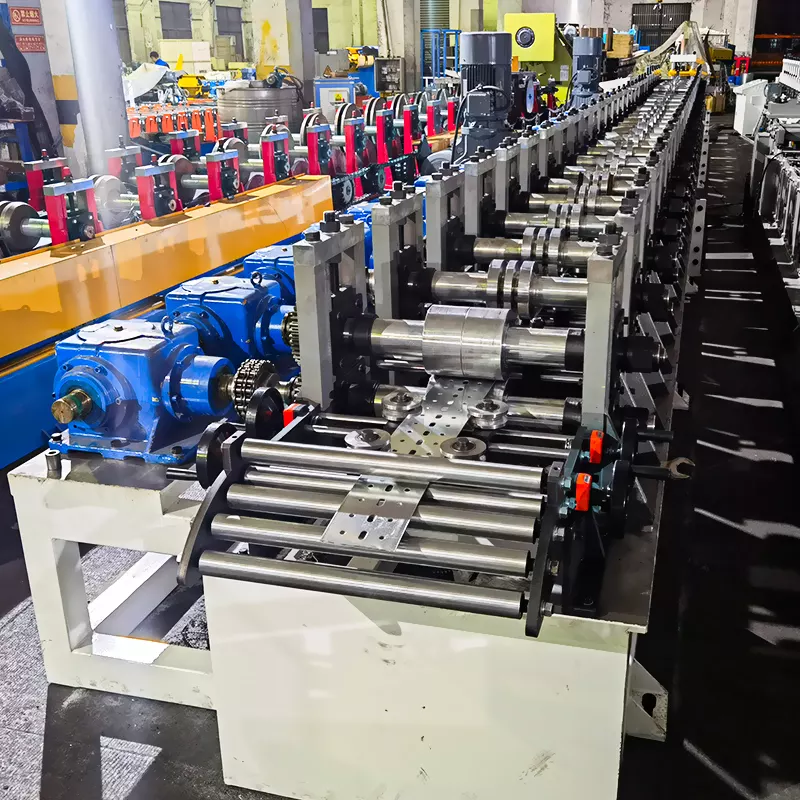
Innovations in Robotics Roll Forming Machines for 2025
To meet the growing and changing demands of automated metal forming, roll-forming technology is undergoing significant advancements. Below are some of the most exciting innovations in robotic roll-forming technology:
1. AI-Powered Process Optimization
- What It Enables: AI-driven algorithms optimize forming parameters in real time.
- Why It’s Revolutionary: Reduces material waste and ensures perfect repeatability.
2. Multi-Robot Collaboration Systems
- What It Adds: Multiple robotic arms work simultaneously for material handling, forming, and stacking.
- Why It’s Valuable: Improves production speed and efficiency.
3. Real-Time Defect Detection with Machine Vision
- What It Offers: High-resolution cameras and AI-powered defect detection.
- Why It’s Essential: Reduces manual inspection time and product defects.
4. Advanced Corrosion and Fire-Resistant Coatings
- What It Integrates: In-line coating systems for applying protective layers during production.
- Why It’s Critical: Extends the lifespan of roll-formed products.
Why Wuxi Sunway Machinery Leads the Robotics Roll Forming Industry
1. Extensive Industry Expertise
Decades of experience in robotic roll-forming solutions, automation, and industrial machinery.
2. Cutting-Edge Technology
Incorporates AI-driven quality control, IoT, and multi-robot collaboration into their machines.
3. Customization Excellence
Provides tailored robotic roll-forming solutions for automotive, aerospace, and construction industries.
4. Global Industry Leadership
Trusted by clients worldwide, ensuring high-quality, reliable production systems.
5. Comprehensive Support
Offers consultation, training, and after-sales services for seamless machine operation.
Visit their official website to explore their offerings or request a customized robotic roll-forming machine for your industry.
Conclusion: The Future of Automated Metal Forming is Here
Automation and robotics are redefining the roll-forming industry, and Robotics Roll Forming Machines are leading this transformation. Whether for automotive, aerospace, construction, or smart factories, these machines enable unmatched precision, efficiency, and scalability.
Looking to optimize your roll-forming process with robotics? Partner with Wuxi Sunway Machinery and take your production to the next level.

